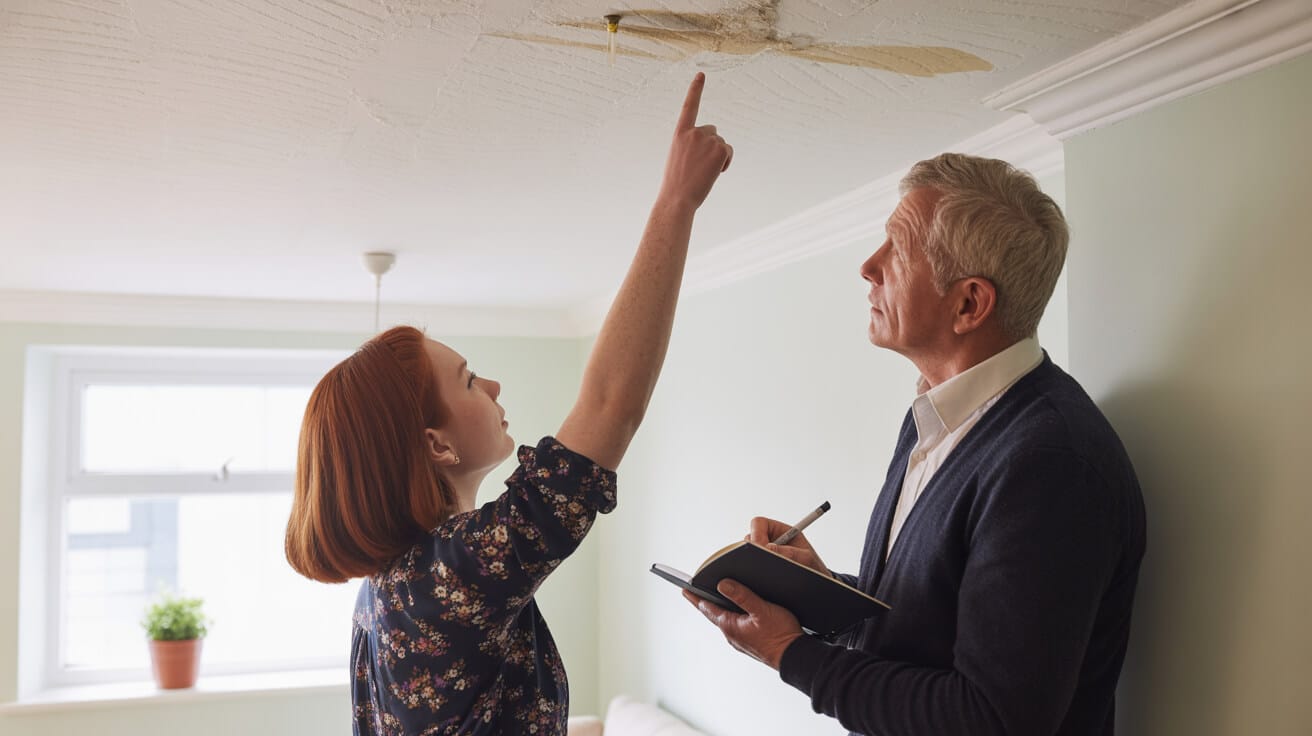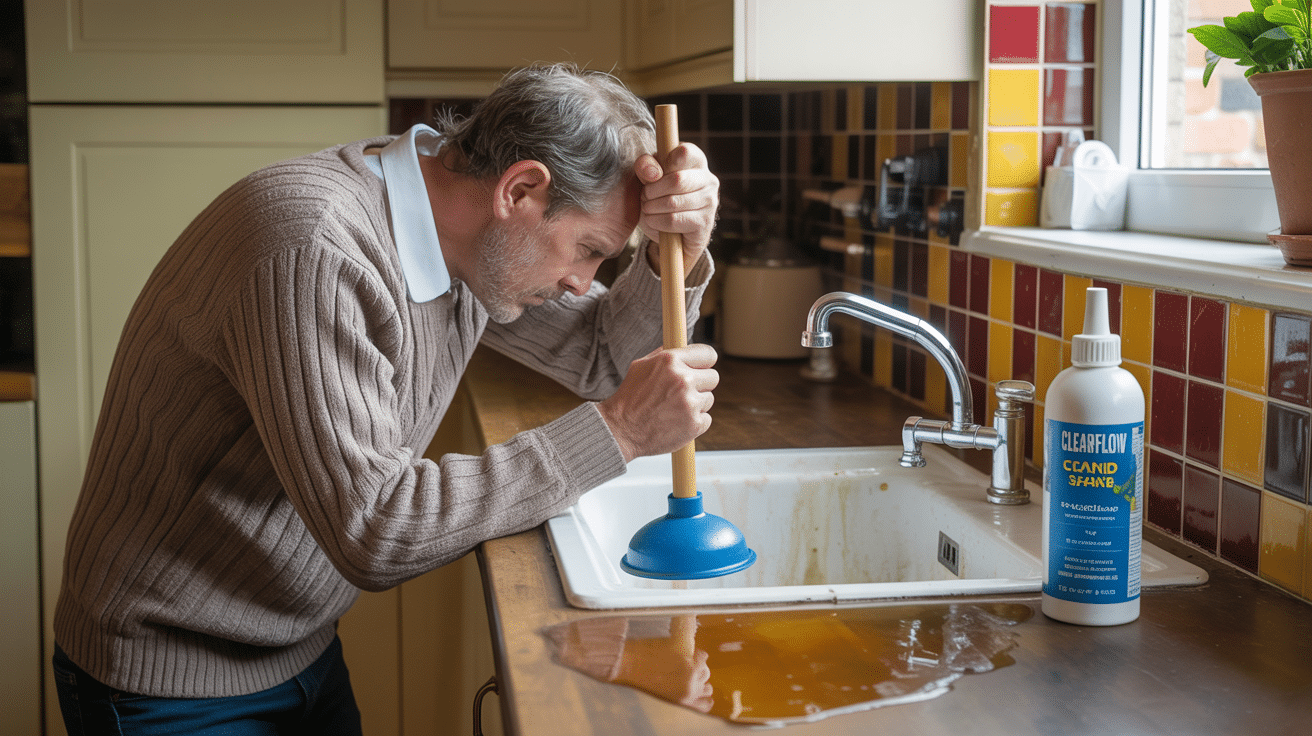 Why You Shouldn’t Turn The Heating Off Completely When Away
Why You Shouldn’t Turn The Heating Off Completely When Away
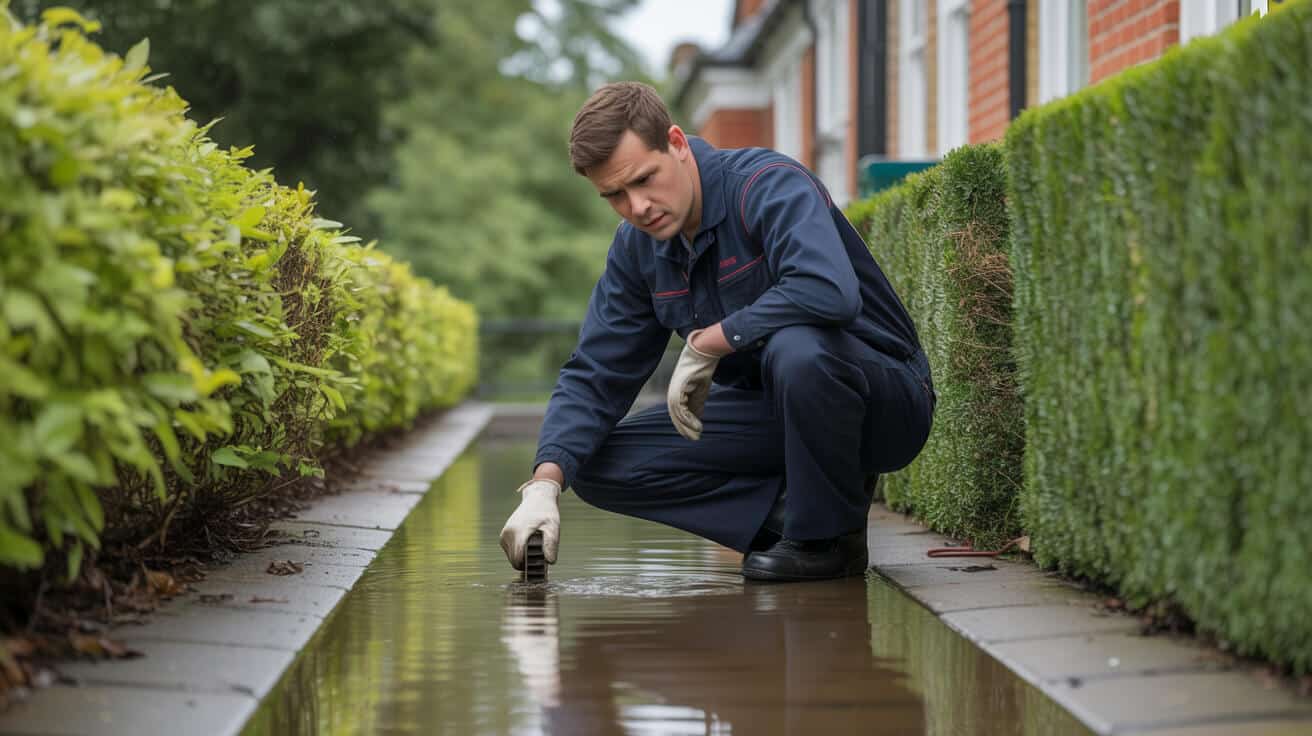
Why Does Switching Off Your Heating When Away Threaten Your Property—and Your Reputation?
When cold weather hits, the urge to save on heating costs by shutting the system off seems almost logical. The myth that “no heat, no spend” will keep your bills low often masks the much bigger risks lurking below. If you’re a homeowner, portfolio landlord, letting agent, or local authority, the decision to cut all heat isn’t just about bills—it’s about asset protection, compliance, and your standing when something goes wrong.
Cutting corners on heat might save pennies, but it can cost everything you’ve built in a single icy night.
Leaving a property cold does more than chill the air—it exposes pipework, plaster, wiring, and your legal standing to silent threats. Properties of every type, from Victorian terraces to high-end flats and commercial stock, are vulnerable. What starts as a simple “OFF” setting can escalate into weeks of disruption, eye-watering insurance refusals, and reputational bruising with tenants or clients.
Your reputation isn’t just tied to quick turnarounds—it’s forged by how you handle risk most others overlook.
What Physical Damage Happens When You Turn Heating OFF During Cold Spells?
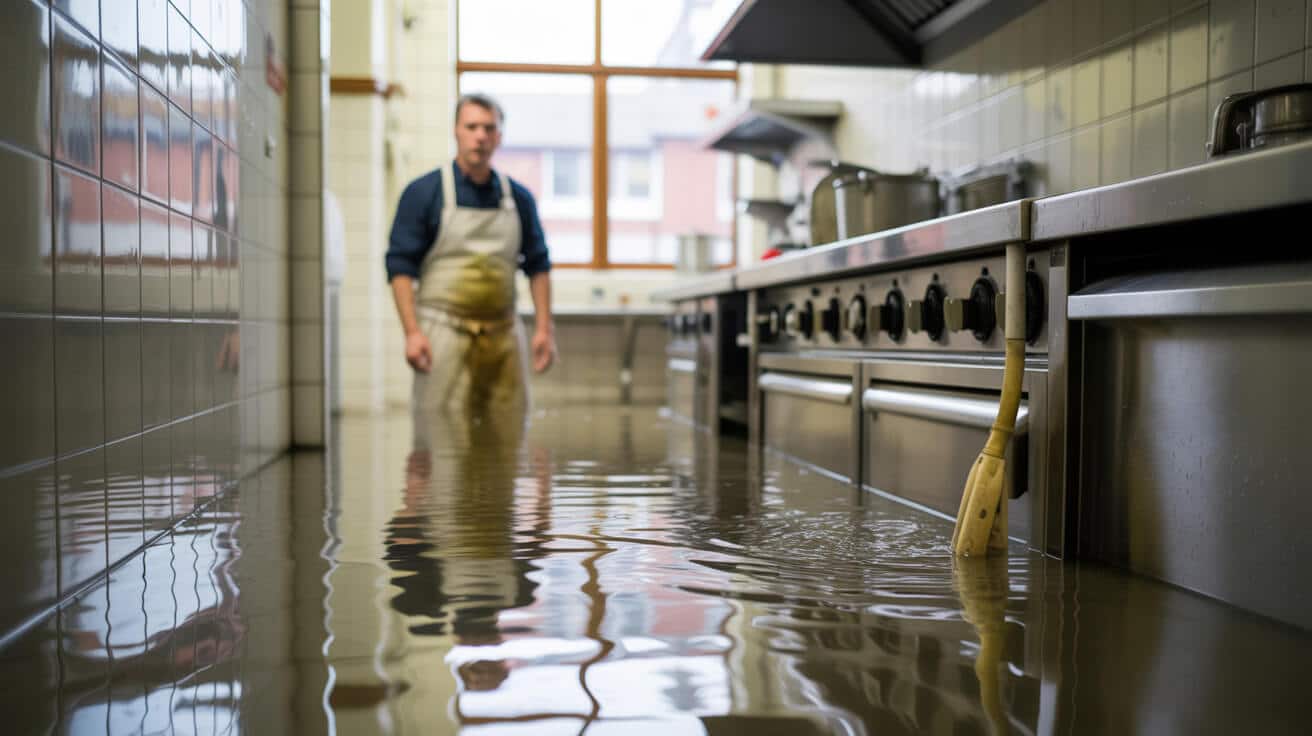
Switching your heating off before leaving is the domino that triggers pipe splits, hidden leaks, and devastating floods. As the interior temperature dips below freezing, trapped water in pipes, tanks, or joints starts to crystallise. And unlike the headline-grabbing burst water mains, residential pipe failures start quietly—above ceilings, behind skirting, or under cupboards—where years of careful finishes disappear overnight.
It’s the water you don’t see that destroys more homes and livelihoods than an open tap ever could.
Why Are Some Spaces More At Risk?
- Loft and attic runs: —most vulnerable due to minimal insulation.
- Outbuildings, garages, garden rooms: —typically lack regular heating.
- Pipes along outside walls: —heat loss is rapid through uninsulated brickwork.
- Void spaces and cupboards: —create cold pockets hidden from the thermostat’s reach.
Once ice has formed, physics takes over. Water expands as it freezes, bursting pipes no matter how modern the material. Thawing is the silent enemy—those splits become leaks, seeping into floors and electrics. It’s common to see costs spiral from a small wet patch to tens of thousands in repairs, lost rent, or legal battles over negligence.
The Chain Reaction: From Pipe to Portfolio
A single burst isn’t just a mop-up job:
- Hidden water can warp joists, rot sub-floors, and render insulation useless.
- Ceiling leaks will travel fast, destroying finishings and electrical systems, sometimes even voiding warranties if “owner prevention” steps weren’t taken.
- For block managers, one freeze can spark a chain—affecting multiple flats, raising legal questions of due diligence.
And here’s the brutal reality that catches out the savvy: insurance might slam the door if you can’t prove adequate heating was maintained, especially for unoccupied periods.
How Does Cold Lead to Damp, Black Mould, and Costly Repairs?
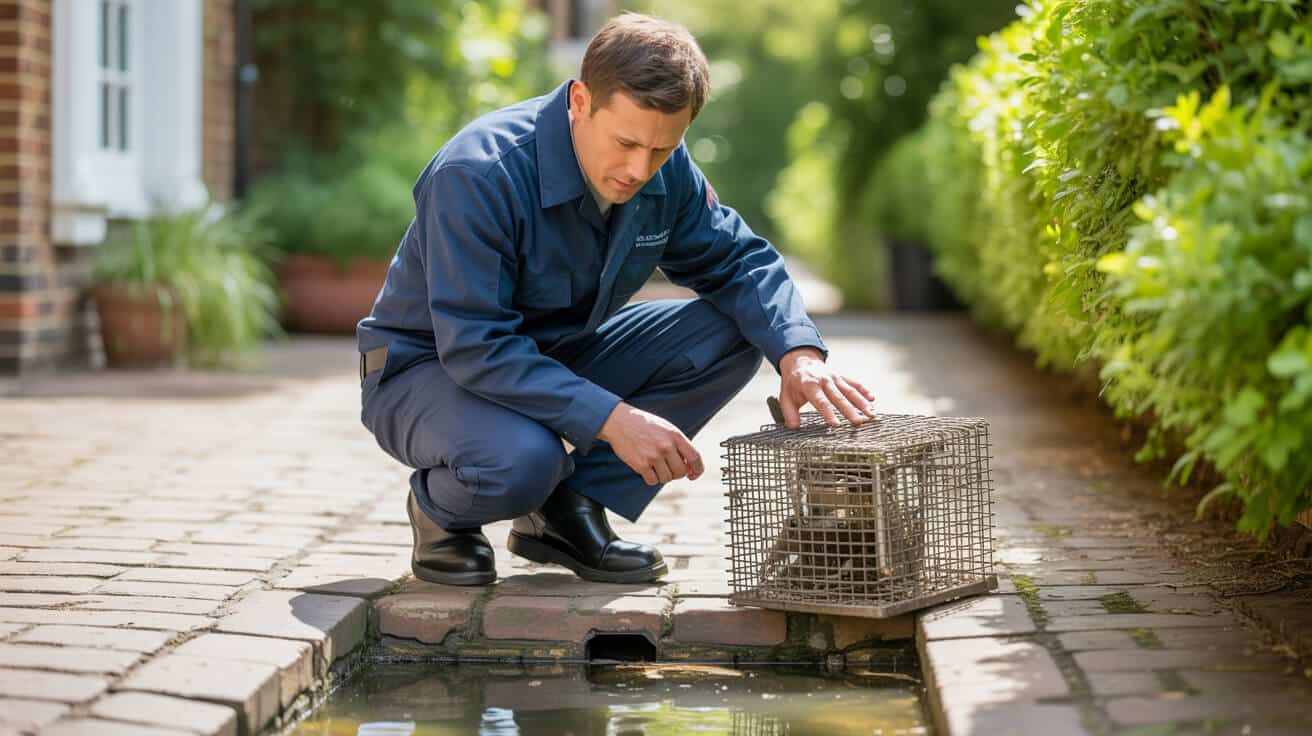
Unheated properties become breeding grounds for condensation. As interior warmth ebbs away, humid air—tiny amounts from bathing, cooking, or even drying laundry—settles onto the coldest surfaces. Once that happens, the damage accelerates.
Mould isn’t just ugly; it’s a sign your defences have already failed.
Behind wardrobes, under kitchen units, and in window alcoves, persistent moisture drives explosive black mould growth. The triggers: poor ventilation made worse by sealed windows, plus temperatures that dip each night without the buffer of background heat. Within days, spores take hold.
What Are the Knock-On Effects of Neglected Damp?
- Plaster and paint delamination: —weeks of strip and repair.
- Sub-floor timber rot: —an expensive, structural headache.
- Saturated insulation: —wrecking heating efficiency for years.
- Long-term air quality problems: —medical issues for tenants and occupants.
For landlords and agents, failed humidity control is more than an aesthetic problem; it becomes an ongoing cycle of cleaning bills, complaint handling, and eventually, enforced upgrades or compensation. Many times, failing to run the heating during empty periods is viewed—by insurers and the courts—as a preventable oversight.
Do Minimal Energy Savings Outweigh the Risk of Massive Water and Mould Damage?

Lowering your thermostat by just one degree saves between 3-5% on your bills; but shutting the system OFF in pursuit of bigger “savings” can backfire spectacularly. A typical pipe burst claim in the UK averages £8,800 just for basic repairs, with plenty pushing over £15,000 when factoring in secondary issues like strip-outs, replacement of electrics, and lost rent (daikin.co.uk).
You can’t out-save a flood. One small act of prevention beats a fortune in fixes that insurers might not cover.
On top of direct repair costs, you’ll face uncertainty with insurers. Most UK home and landlord insurance policies include a clause: if you turn off the heating during winter, and water escapes as a result, your claim could be thrown out. That extends to associated losses—mould, damp damage, ruined belongings, and potential alternative accommodation costs—or even legal costs from tenants and leaseholders.
Smarter Approach to Real Savings
- Set thermostats to 12–15°C: —this is the insurer-approved buffer zone.
- Frost-protection and “holiday” settings: —modern controls make this easy, often programmable by app.
- Document your settings: —a quick photo or smart-home screenshot provides vital evidence later.
Remember, “system OFF” is the danger zone. Continuous background heat isn’t just comfort—it’s your shield against the unexpected.
How Should You Prepare and Safeguard Property Before Going Away?
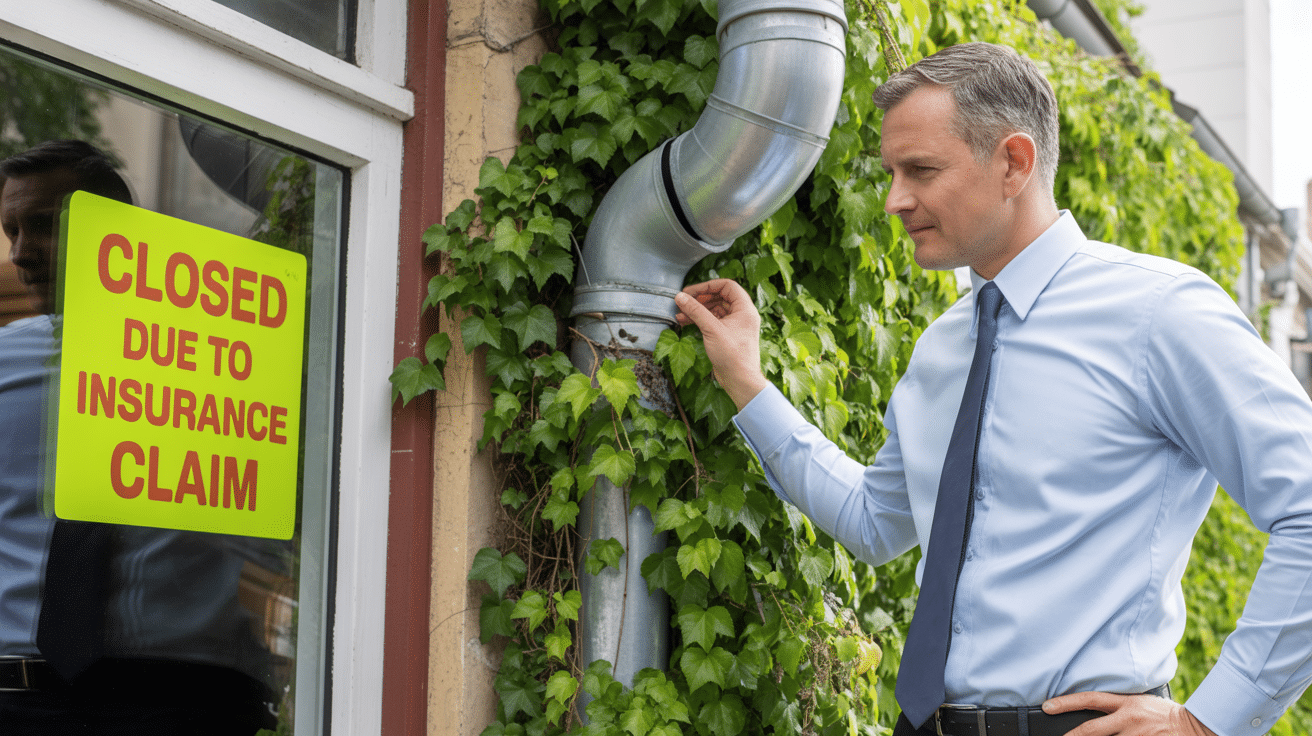
Prevention is always less expensive—financially and in terms of the headaches it saves. A checklist-driven approach signals professional care, not just luck.
Hector Gauge’s Five-Point Absence Protocol
1. Lag Every Exposed Pipe and Valve
Inspect attics, external runs, and under-sink spaces. Fit or renew foam lagging. Focus on joints, elbows, and stopcocks—these are weak points.
2. Open Air Pathways
Leave internal doors and bathroom cabinets open when away—circulation beats cold spots every time.
3. Banish Draughts
Seal wall penetrations and unused airbricks near pipework with foam or draught excluders—small gaps can create freezing microclimates in minutes.
4. Set Heating Timers for Consistent Low Heat
Don’t just ‘set and forget’. Use smart features to keep heat circulating at 12–15°C, adjusting for local cold snaps as needed. Test the system shortly before you leave.
5. Create a Dated, Visual Record
Photograph your thermostat and timer setting, preferably with your phone’s metadata visible. It’s simple, cost-free, and often the clincher in any insurance wrangle.
For larger portfolios, HMOs, or commercial premises, go one step further: arrange a scheduled winter audit by a WRAS or WaterSafe plumber. They’ll check frost-stats, isolation valves, and provide a compliance report if ever queried by authorities or your insurer.
What Are Your Legal and Insurance Responsibilities When You Leave Heating Off?

UK law and insurance best practices both expect “reasonable steps” to prevent freezing or water-related losses. In unoccupied—especially tenanted, managed, or commercial—sites, failing to provide continuous background heat isn’t just risky, it may be unlawful.
The first thing a loss adjuster asks after a claim: was your heating left on? If not, you could be on your own.
The Legal and Contractual Framework
- Tenancy agreements: Nearly all require heating to prevent freezing.
- Insurance coverage: Most policies stipulate a minimum of 12°C for any unoccupied period over 24–48 hours (see schofields.ltd.uk).
- Product and warranty compliance: Cylinder, boiler, and system warranties regularly require winter heating, or all coverage can be voided.
- Health and safety codes: For shared or public spaces, lack of heating during winter may bring penalties relating to mould or water hygiene.
Portfolio managers, agents, and local authorities are increasingly called to prove schedules, logs, and remote records of system use. Fall short, and the risk isn’t just asset damage—it’s legal entanglement, missed compensation, and long-term reputational harm.
What Does The Trade Experience Reveal—Real Losses from “OFF” Settings?
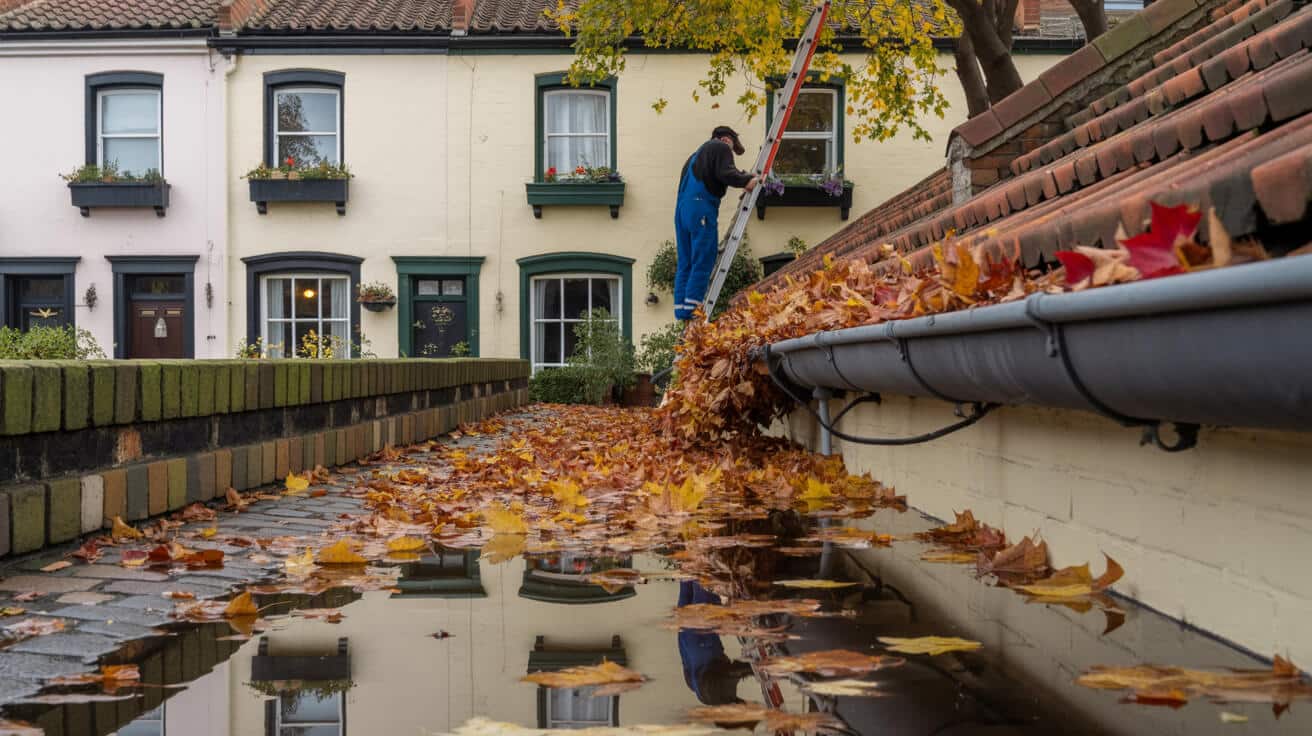
Every winter in the UK, thousands of claims and callouts follow the same storey: an owner tried to outwit the weather and their insurer with wishful thinking, not documented care. The damage isn’t only physical—reputation, revenue, and tenant trust are on the line.
Every expensive burst we fix starts with someone believing ‘It’ll be alright for a few days’.
From Job Sheet to Insurance File: True Costs
- Complete flood-outs in properties where heating was OFF—clean-up averaged above £10,000, with some portfolios facing over £100,000 in aggregate damages.
- Insurance denials, sparking months or years of litigation because keypad or app logs couldn’t verify heat compliance.
- Mechanical breakdowns: valves, pumps, and boiler seals degrade if left off and un-used in the cold. Several major brands specifically warn against shutting down for more than 48 hours in winter.
- Furious tenants and stakeholders: complaints, negative reviews, even regulatory intervention for “avoidable neglect” in vulnerable sites (care homes, managed social housing).
As any WRAS or G3 engineer will confirm, the simple act of leaving the system on low is the mark of a professional—cheap insurance, ironclad compliance, and reputation protected.
How Do Smart Thermostats and Heating Tech Remove Risk and Save Money?

For every size and style of property, smart thermostats, programmable timers, and remote-control systems now provide everything you need: background warmth, evidence of compliance, and the power to intervene from anywhere. You’re no longer chained to the old set-and-pray approach.
Smart heating isn’t just about comfort—it’s your legal and financial firewall.
Key Features to Demand
- Remote monitoring: —adjust heating in response to forecasts, wherever you are.
- Programmable schedules: —frost and holiday modes keep compliance automatic.
- Device logs and alerts: —downloadable records, performance warnings, instant evidence for any dispute.
- Eco and compliance payoff: —these systems strengthen your EPC score and might entitle you to grants or mortgage incentives.
For landlords, letting and managing agents, or commercial property teams, platform-based solutions mean you can run scheduled audits, share documentary proof with clients, and never be caught out by a “heating off” claim again.
Why Plumbers 4U’s Winter Prep Makes You the Safest Bet in the Business
Winter risk is a systems game. At Plumbers 4U, every winter check, absence audit, or emergency call-out draws on a systematic process that leaves nothing to chance. WRAS, G3, and WaterSafe-certified, our engineers offer more than just a wrench and a wrench—every action is designed for your peace of mind, legal resilience, and lasting property value.
What Our Winter Safeguard Service Delivers
- Full audit of insulation and lagging—especially around every pipe elbow, box-in, and isolation valve.
- Thermostat and timer regimen set up—with a hands-on run-through for every occupant or manager.
- Discovery and rectification of exposure “hotspots”—hidden runs, voids, and neglected extensions.
- Photographic and digital logbook—every setting and intervention time-stamped for your records.
- Point-by-point guidance—making sure even app-based and digital controls are up to compliance codes.
- After-service support—so whether there’s an urgent call at 3 a.m., a compliance check, or an insurance claim, you’re never facing it alone.
A few minutes checking your system beats a lifetime of expensive regrets. Document every step, cover every risk, and let us shoulder the technicalities.
With Plumbers 4U, you aren’t betting on luck or hoping for leniency. Systematic prevention turns your winter from a risk into a proof point—a storey of how you did it right, when almost everyone else risks everything to save a few pennies.
Ready to Safeguard Your Property? Here’s What To Do Next
Your heating is more than a comfort button. It’s the barrier between winter chaos and your best season. Don’t wait for the belt of snow—or the next unpredictable freeze—to gamble with your buildings, business, or reputation.
- Book a “going away” system check: —get digital documentation, photo-logged settings, and WRAS/G3 expertise in one visit.
- Landlords and agents: tie every handover or property check to proof of system set-up and compliance—protect your clients and your business alike.
- Portfolio owners, managers, and local authorities: commission regular winter audits. Guarantee that every asset is not only legally protected but operationally resilient.
Plumbers 4U covers every corner of the UK—on call, on the ground, and on your side for every winter challenge. Ready to put your compliance and peace of mind on pre-set? Your next season of safe, reputation-proof property management starts here.
Frequently Asked Questions
What new insights have emerged about property damage when heating is left off in winter—are behaviours and regulations changing?
Heating left off during winter now triggers more than just frozen pipes—it creates a scenario where both technology and insurance scrutiny have advanced dramatically. Insurers increasingly use data from smart thermostats and leak sensors to validate claims, raising the bar for proof if disaster strikes. A decade ago, insurers might have believed a homeowner’s word about “just a cold snap,” but today, they often require precise time-stamped logs showing active background heat. Similarly, local authorities now inspect properties, especially rentals, with digital tools that pick up recent temperature records and humidity spikes—exposing properties that quietly slipped below the dew-point when left unheated.
The storey your boiler or thermostat tells can determine not just insurance payouts but legal compliance for years to come.
In parallel, broader climate changes trigger more unpredictable freeze-thaw cycles; insulation alone cannot keep up with repeated extreme cold-then-mild swings. A single absence without setback heating can turn microcracks in pipes or joints into full-scale ruptures overnight. Research from the Association of British Insurers shows a 16% spike in burst pipe claims linked to properties where remote heating data could not be supplied (ABI, 2023). As key policies now require digital documentation, an integrated approach—combining always-on setback heat, app-based controls, and periodic engineer inspection—has become essential, particularly for landlords and those managing portfolios. Owners who ignore these trends risk uninsured losses and regulatory headaches that weren’t on anyone’s radar five years ago.
Why are older “just leave the heat off and insulate” beliefs now costing more than ever?
- Modern plumbing materials like PEX and push-fit plastic, while easier to instal, are often more susceptible to micro-expansion failures during multiple cold snaps.
- Energy-saving habits have made “off-completely” a common choice, yet government guidance and most providers now mark this as a risk, not a virtue.
- Insurance ombudsman cases reveal that absence of digital evidence increasingly leads to denied claims—even for owners with proven insulation upgrades.
What steps now set compliance leaders apart?
- Fit thermostats that provide downloadable logs (Nest, Tado, Hive) for proof-of-heating in both audit and emergency situations.
- Schedule independent winter audits with WRAS/G3-certified engineers and store digital or photo documentation for at least three years.
- Educate anyone with property access—tenants, contractors, caretakers—on the operational and financial risks of lowering the stat below 12°C during any winter stint.
How has the science of mould and condensation prevention changed—what really works in harsh UK winters?
Recent scientific reviews show that “mould aversion” hinges on steady temperature management just as much as it does on ventilation. Once walls drop below the dew point, air moisture condenses out—no matter how open the windows. British Standard BS5250:2021 sharpened its focus on “thermal bridges,” the coldest spots that start condensation even when the rest of a room feels dry. These include the corners behind furniture, window sills, and internal walls against loft or unheated spaces. The consensus: simply “airing” a property or running extractor fans isn’t enough without regulated warmth.
What’s changed is the expectation for owners and managers to keep real-time humidity and temperature logs, especially in tenancies at risk or sensitive environments (schools, care homes). Property ombudsmen and trading standards now review these logs in dispute cases, deciding if a landlord took all “reasonable” steps to prevent dangerous living conditions. For homes with long absences, the UK Centre for Moisture in Buildings now recommends digital climate monitoring—devices that warn when risky drops occur, so minor issues can be addressed before returning to catastrophic black mould.
Condensation and mould are less about opening a window, more about understanding the silent war of temperature and humidity.
What has research found about the speed and harm of post-holiday mould blooms?
- Mould spores double every 24–36 hours on cold, damp surfaces, especially between 7–12°C.
- Tenancy deposit disputes increasingly rely on temperature and humidity charts—omissions tilt rulings against landlords or agents.
- NHS England correlates winter admissions for respiratory issues with spikes in residential mould; authorities act faster on health complaints linked to heating lapses.
How does a property owner go from “at-risk” to “proactive” on these issues?
- Use smart monitors that log both temperature and humidity, and link alerts to your phone—many models cost less than a missed monthly rent.
- Add airflow behind furniture and in cupboards with passive vents or wedge-stops.
- Upgrade extractor fans to run on humidistat sensors, ensuring they operate automatically during risky climatic periods.
Which new compliance pitfalls and legal liabilities have surfaced for property managers who neglect heating best practices?
The compliance game has shifted. Digital evidence dominates insurance and tenancy discussions—a written log in a site diary is no longer enough. While previous years gave the benefit of the doubt, block insurers and large letting agencies now cross-reference boiler logs, smart controller data, and even energy supplier “half-hour” readings to confirm properties never fell below official minimums. A major UK landlord network case in 2023 involved six-figure damages after a central heating audit exposed just two hours where temperature dropped under 12°C during a snowstorm—voiding both public liability and damage claims across multiple flats.
Legal language has also evolved: standard lease clauses now demand “continuous heating” and “documented evidence.” Local authorities, when presented with tenant complaints, access this data and issue improvement notices or, in severe cases, fine owners and management agents. Even insurers who once accepted physical thermostat photos now reject claims unless provided with automated logs or third-party engineer verifications.
What’s in your logbook isn’t just paperwork—it’s your shield in a tribunal, a claim, or a tenant dispute.
Which compliance and legal steps are now standard for landlords and portfolio managers?
- All leases should explicitly state the heating protocol (minimum temp, record retention, reporting frequency).
- Engage engineers for system commissioning at the start of every cold season—store benchmarks independently, not just with the occupant or letting agent.
- Update emergency and winter policies to clarify heating roles and consequences, and get signed acknowledgement from tenants or staff.
What technology and documentation strategies best secure your legal position?
- Instal tamper-proof, cloud-synced climate recorders in common areas and boiler rooms.
- Store all heating system digital logs (boiler, smart stat, app records, and supplier reports) in an external, date-stamped compliance archive.
- Use independent quarterly safety-checks to validate both system performance and recordkeeping—accepted as proof by insurer and council alike.
How do evolving smart control options deliver both superior risk management and savings compared to legacy thermostats?
smart controls now go far beyond the basic “frost protection” of older thermostats. Advanced models continually learn normal usage patterns, sense occupancy, and adjust pre-emptively for minor temperature dips or sudden weather changes. Many issue “freeze warning” or “excess humidity” notifications, empower remote override in emergencies, and log detailed minute-by-minute records suitable for both insurer and auditor. These features offer property owners a chance to intervene before damage escalates—triggering a boiler cycle at the first sign of a cold snap or alerting a caretaker to an abnormally slow warm-up that might indicate blocked radiators or failing zone valves.
What’s notable now is the integration across whole portfolios and building types: a facilities manager can review all sites in a dashboard, apply staggered heating profiles based on exposure and weather feeds, and export unified compliance reports with a click. The collective intelligence of these devices often corrects common errors—such as “holiday mode” programmed too low, or systems switched off to “save money.” Tools like remote lockout and audit logs close loopholes left by manual controls and inconsistent site supervision.
Today’s heating controls don’t just save on gas—they can save your asset, your insurance, and your reputation.
How do smart thermostats and platforms directly change winter property management?
- Automated minimum heating means no accidental lapses—systems send confirmation to owners or agents after each schedule change or weather event.
- Users with legacy boilers can often add smart stats via external relays, with compatibility guides from major boiler brands (Worcester, Vaillant, Ideal) available online.
- Building-wide systems for larger sites can link up CCTV or leak detectors to trigger heating boosts in high-risk periods.
Are these systems really cost-effective for landlords and commercial owners?
- Insurance rebates are offered by select underwriters when smart climate controls are in place.
- Reduced emergency callouts for frozen pipes or damp-related repairs consistently offset equipment costs within the first two years—even faster for multi-unit portfolios.
Where does professional insulation and lagging fall short without active temperature control—and what can an audit uncover post-2022 storms?
Even the highest-grade WRAS or BS6700-compliant lagging cannot outlast an extended cold plunge without help from active heating. UK Met Office statistics show that the largest 2022–2023 winter insurance spikes happened after events when homes had both new insulation and all heating set to “off.” Post-damage surveys routinely detected air gaps around elbows and joints and cold-bridging under floors or in unheated annexes. Even “belt-and-braces” insulation approaches didn’t stop rapid pipe freezing—especially in modern, open-plan layouts where heat distribution is uneven and rapid draughts accelerate cooling.
Professional audits now use thermal imaging and smart pressure sensors to check both insulation coverage and “silent leak” risk. They also identify areas with hidden cold bridging and suggest targeted upgrades: secondary lagging, insulation sleeves for stopcocks, or installing low-voltage “trace heaters” for pipes in hard-to-reach runs. WRAS and G3 auditors now advocate for a “nested defence”—combining physical upgrades with digital heating records, to prove an intent to prevent, not just react.
You can’t wrap your way out of a pipe freeze, but you can insulate smarter and monitor harder.
What advanced audit steps reveal the weak spots insulation alone doesn’t fix?
- Run a thermal scan during early frost to spot hidden gaps; instal multi-point sensors to log hourly temperatures in lofts, garages, outhouses.
- Inspect all external wall penetrations and attic routes with moisture metres—tiny leaks become cold conduits fast.
- Upgrade insulation at every valve, compression fitting, or stopcock—not just straight pipe runs.
Why do insurers now care about post-upgrade audits, not just the work invoice?
- Professional post-upgrade audits confirm correct installation and provide dated, engineer-signed reports.
- These are accepted as “active mitigation” by most providers—reducing claim friction and rewarding forward-thinking managers, especially after a severe winter or round of claims in a block or estate.
What comprehensive checklist guarantees year-round compliance, heating security, and risk reduction for owners, landlords, and asset managers?
The benchmark for winter-readiness is no longer a one-time audit or generic “keep the heating on” guideline. Insurers, authorities, and tenants expect a continuous, evidence-backed workflow that includes technology adoption, documentation discipline, and active communication with everyone involved. Compliance must be robust enough that any external auditor, insurer, or local inspector can “walk the chain”—from engineering logs to tenant notifications—without finding a gap.
A high-trust, resilient checklist now looks like this:
Modern Winter-Protection & Documentation Checklist
| Process Step | Property Area(s) | Documentation Needed |
|---|---|---|
| Smart stat and logger instal | Every dwelling and block | App/dashboard log |
| Engineer-certified winter audit | All heating systems | Certificate/file upload |
| Lagging and airflow coverage check | Lofts, voids, outbuildings | Audit/photo sheet |
| Scheduled test alerts and metre checks | Highest-risk units | Alert/email archive |
| Digital winter policy shared to all stakeholders | Tenants, staff, contractors | Acknowledgement log |
| Emergency contact and stat-stuck protocol issued | All occupants/sites | Guide/reply receipt |
Every step not only hardens your risk management, but also accelerates claims or compliance evidence—a frequent reason landlords or agents lose out on both financial and reputational recovery after adverse events.
What elevates compliance leaders above the crowd this winter?
- Automatic notifications to tenants and team every time a stat is adjusted or cold is forecasted.
- Quarterly third-party engineer audits—each with an update or “pass/fail” record signed and timestamped.
- Use of “compliance dashboards” that track every property, log alerts, and flag when any record or action step lapses.
For complete, year-round assurance and market-leading claim validity, property owners and managers now partner with fully certified auditors. Plumbers 4U’s winter resilience programme ensures not just readiness, but future-proof operational reputation—so every asset stays safe, insurable, and trusted, no matter what the UK weather brings.

